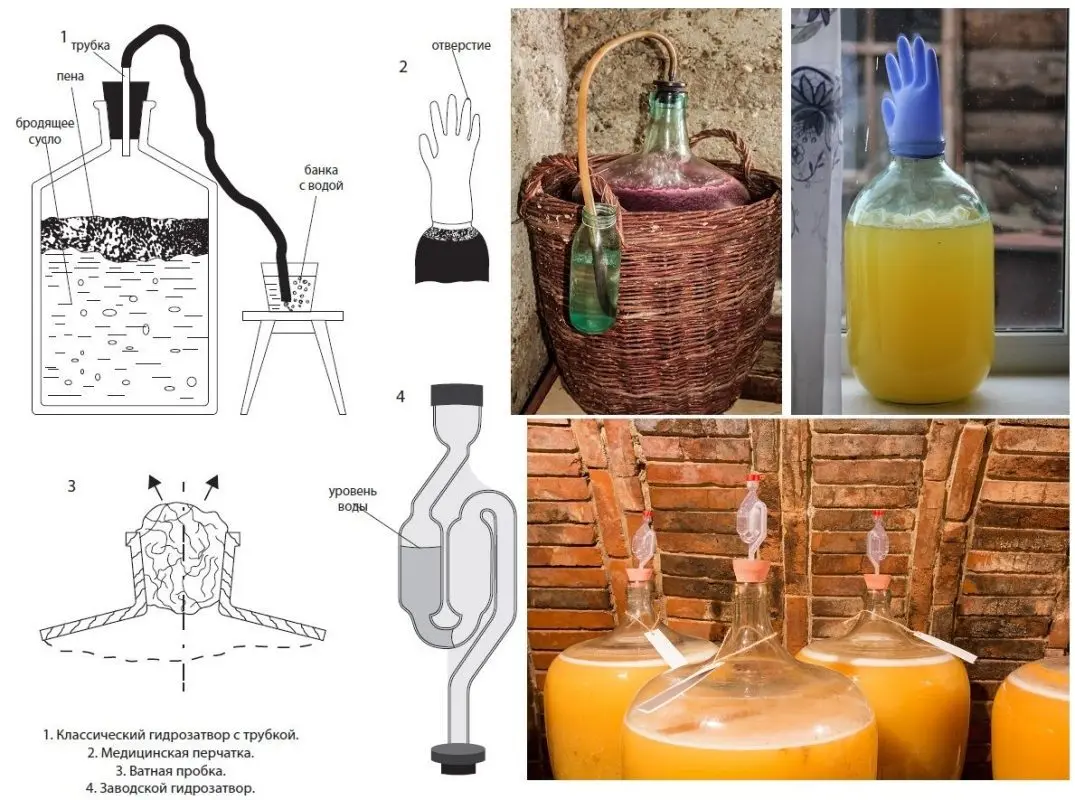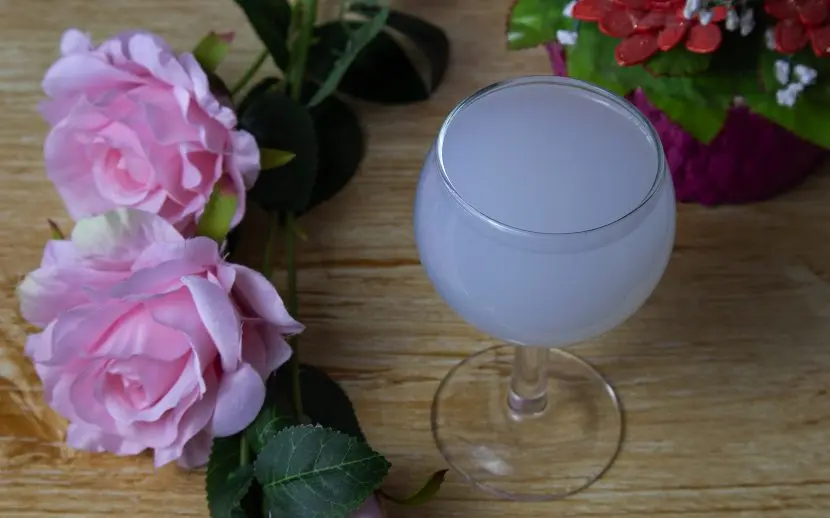Lychee wine is white in color (poorly clarified due to pectin in the pulp) with a slight aroma of flower jam and notes of currants, strawberries, kiwi, white grapes on the palate. An unusual combination of several fruit tones in one drink. The main difficulty in cooking is to separate the pulp from the skins and bones, it takes a lot of time, otherwise the technology is standard.
Attention! Straw-colored Chinese lychee wine can be found on sale. The nature of this shade is incomprehensible, since the pulp of the fruit is white. If dyes were not used, then the only option remains – lychees were added along with the skins. Given that for long-term storage, the surface of fruits is treated with preservatives, it is not recommended to use skins.
Ingredients:
- lychee fruits – 3 kg;
- citric acid – 10 grams (or juice of two medium lemons);
- wine yeast (raisin sourdough) – per 1,5 liters of must;
- sugar – to taste (to sweeten the finished wine).
Ripe lychee fruits are quite juicy and contain 14-15% sugar, so in order to preserve the unique exotic taste, water and sugar are not used in this recipe (can be added at the end of cooking, making the wine sweet or semi-sweet). From the indicated amount of ingredients, about 1 liter of dry lychee wine with a strength of 8-9% should be obtained.
Citric acid is needed to stabilize the acidity and normal fermentation. Since there is no wild yeast on the surface of the lychee, you need to add store-bought wine yeast to the wort (it is advisable to use strains for white varieties) or make a starter from raisins in advance.
Lychee wine recipe
1. Peel the lychee fruits and remove the seeds.
2. Pass the pulp through a meat grinder or beat in a blender (optimally).
3. Place the resulting homogeneous liquid mass in a non-metallic container (plastic or stainless steel) with a wide neck – a saucepan or bucket. Add citric acid (squeeze out lemon juice) and wine yeast (sourdough).
4. Cover the mouth of the container with gauze to protect against insects. Leave for 3 days in a dark place at room temperature. After 8-20 hours, signs of fermentation should appear: foam, hiss, a slight sour smell.
5. Twice a day stir the wort with a clean hand or a wooden spoon, drowning the pulp in the juice – the floating particles of pulp. Without stirring, the wine can turn sour.
6. Pour the wort into the fermentation tank, filling up to a maximum of 80% of the volume. Install a water seal of any design on top of the neck. Even a clean medical glove with a hole in one of the fingers will do.

7. Transfer the wort to a dark room (can be covered with a thick cloth) with a stable temperature of 20-28 °C. Leave until the end of fermentation.
Depending on temperature and yeast, homemade lychee wine fermentation usually lasts 35-50 days. When the water seal does not release gas for several days (the glove deflates), and a layer of sediment appears on the bottom, fermentation is over.
8. Carefully drain the young wine through a straw without hitting the sediment. Try a drink. Sweeten with sugar if desired (to taste).
9. Pour the wine into a glass container for aging. For minimal contact with oxygen, it is advisable to fill the jar or bottle up to the neck. If sugar was added, keep the drink under a water seal for the first 10-12 days in case of repeated fermentation.
10. Transfer the wine to a refrigerator or cellar (temperature +2-16 °C) for aging. Leave for at least 2-3 months to improve the taste (optimally 5-7 months). When a precipitate appears with a layer of 2-5 cm, filter by pouring through a tube into another container without sediment.
Attention! Due to the high content of pectin, lychee wine is poorly clarified and remains white even when aged. Bentonite and other means of clarification are ineffective.
11. When the sediment does not appear for a couple of months, the wine can be bottled for storage and sealed. The recommended shelf life is up to 2 years. Fortress – 8-9%.










